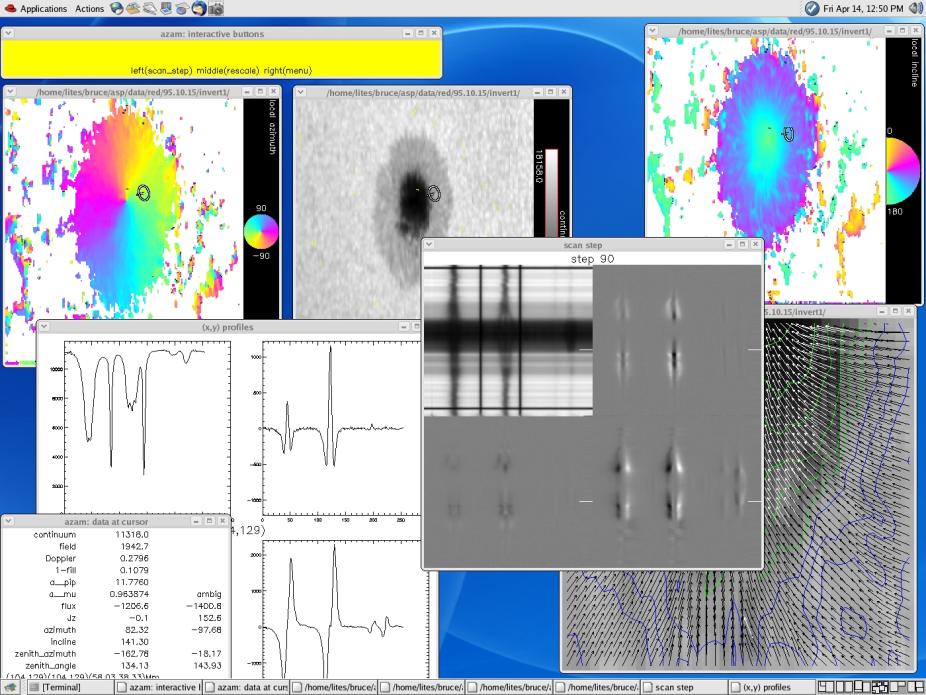CSAC Magnetic Field Disambiguation
The vector magnetic field inferred from measurements of Zeeman induced polarization in spectral lines suffers from and inherent 180 degree azimuth ambiguity. This renders two possible formal solutions for the magnetic field vector at each spatial position of any particular data-set. Solving this ambiguity is a requisite to further exploiting the data. However, it is an ill-posed problem, since it requires knowing quantities that are typically not constrained by observations (i.e. the variation in height of the three components of the magnetic field). A suite of methods that use different assumptions and approximations has been developed to tackle the disambiguation problem. Below, you can find information and links to a few community disambiguation tools.
AZAM
The AZAM utility was developed at HAO in the 1990s as an interactive, multi-purpose tool for the analysis and display of data from the Advanced Stokes Polarimeter. Among other features, AZAM allows the user to interactively resolve the 180 degree ambiguity of the magnetic field azimuth present in any measurement obtained from polarization. Largely the work of Paul Seagraves and Bruce Lites, AZAM currently supports Hinode/SP as well as SDO/HMI data. AZAM is written in IDL and has been incorporated into the Solar Soft tree (http://www.lmsal.com/solarsoft/), where it can be found under the PACKAGES branch.
Among its many features, with AZAM, one may:
- Interactively resolve the inherent 180° ambiguity of the magnetic field azimuth that is present in any measurement that uses polarization.
- Display the vector magnetic field in a number of ways: color images, arrows, contours.
- Interactively display the observed Stokes polarization spectral images along side of the individual Stokes polarization profiles of selected spatial locations.
- Interactively display the values of individual instances of the extracted magnetic and atmospheric parameters.
- Display the 2-dimensional images of the fitted quantities (i.e., Doppler shifts, line strength, fill fractions, field inclination).
- Display vector field properties in either the observer's frame or the "zenith frame" (as if the observer were looking directly down on the observed portion of the solar disk).
- Display images in solar coordinates (longitude, latitude), appropriately mapped to the grid on a spherical surface.
- Output images to PostScript for printing or other applications Blink images of different parameters against each other.
As part of the Ambiguity Resolution Workshop (2005), a head-to-head test of many methods for resolution of the ambiguity was carried out. In all test cases, AZAM exceeded the performance of any other method. However, AZAM is a manual method for resolving the ambiguity, so the success of its use depends heavily on the experience and knowledge of the user. Nonetheless, it remains a very useful tool for this important piece of the task of measuring solar vector magnetic fields.

Screenshot of an AZAM session operating on ASP data.
Auto-Ambig
The AutoAmbig code for automated ambiguity resolution by Leka, Barnes and Crouch is available for Level 2 Hinode SP data at http://www.cora.nwra.com/AMBIG/.
This code for the automated ambiguity resolution of vector magnetic field data is loosely based on the Minimum Energy ambiguity resolution method described by Metcalf (1994, Solar Phys., 155, 235) and the present version is described in Leka, Barnes & Crouch 2009, Proceedings of the 2nd Hinode Science Meeting.